 Big power is not just for LSA taildraggers anymore. A few years back, CubCrafters surprised the LSA world with its installation of the most powerful engine in the LSA space. The western U.S. company mounted a Titan engine from ECi making the modest Cub-like airframe perform far better than the old versions from the Piper company.
At the time, this potent powerplant raised eyebrows for two reasons.
First, it seemed an excess of power for the then-new lightweight class of airplanes FAA had just regulated into existence. Most had been using one of the 9-series engines from Rotax, which in some cases was itself a move up from a two-stroke Rotax 582 providing 65 horsepower. CubCrafters limited power after takeoff to maneuver within the regs, though, honestly, who would continue using so much power in cruise or while sight seeing?
Secondly, the Cub-style airframe is already near the upper LSA empty weight calculation so CubCrafters’ engineers had to add many costly carbon fiber elements to keep the empty weight low enough to fit in the class.
Big power is not just for LSA taildraggers anymore. A few years back, CubCrafters surprised the LSA world with its installation of the most powerful engine in the LSA space. The western U.S. company mounted a Titan engine from ECi making the modest Cub-like airframe perform far better than the old versions from the Piper company.
At the time, this potent powerplant raised eyebrows for two reasons.
First, it seemed an excess of power for the then-new lightweight class of airplanes FAA had just regulated into existence. Most had been using one of the 9-series engines from Rotax, which in some cases was itself a move up from a two-stroke Rotax 582 providing 65 horsepower. CubCrafters limited power after takeoff to maneuver within the regs, though, honestly, who would continue using so much power in cruise or while sight seeing?
Secondly, the Cub-style airframe is already near the upper LSA empty weight calculation so CubCrafters’ engineers had to add many costly carbon fiber elements to keep the empty weight low enough to fit in the class.Continental’s Titan Engine to Power Vickers Wave



Vickers is completing all component elements including the CNC bullet sump (top) and tooling for the fuselage.

Big power is not just for LSA taildraggers anymore. A few years back, CubCrafters surprised the LSA world with its installation of the most powerful engine in the LSA space. The western U.S. company mounted a Titan engine from ECi making the modest Cub-like airframe perform far better than the old versions from the Piper company.
At the time, this potent powerplant raised eyebrows for two reasons.
First, it seemed an excess of power for the then-new lightweight class of airplanes FAA had just regulated into existence. Most had been using one of the 9-series engines from Rotax, which in some cases was itself a move up from a two-stroke Rotax 582 providing 65 horsepower. CubCrafters limited power after takeoff to maneuver within the regs, though, honestly, who would continue using so much power in cruise or while sight seeing?
Secondly, the Cub-style airframe is already near the upper LSA empty weight calculation so CubCrafters’ engineers had to add many costly carbon fiber elements to keep the empty weight low enough to fit in the class. Compared to the Rotax 912, Titan beefy engine adds considerable weight so the airframe diet represented considerable work. All the handsome carbon fiber also boosted the price of the CarbonCub to breathtaking levels.
Nonetheless, the company made it work so well that they have set the pace for airplane deliveries in the LSA space for several years. Since they broke the mold, however, other companies such as American Legend and Zlin have installed the engine to offer essentially the same performance characteristics … and they’ve been able to push the price down to levels ByDanJohnson.com readers are more likely to embrace.
However, one strongly emerging class of airplane is the LSA seaplane, and you might think that this higher-empty-group of designs could benefit from more power. Indeed, Rotax recently announced their new 915 model (video) offering 135 horsepower. Given the Austrian company’s vast global network and overwhelming market acceptance, the 915 seems destined to be a success story.
However, 915 won’t arrive on the market until 2017, the company detailed at their Oshkosh press conference. In the meantime, another LSA seaplane has seen an opportunity.
In May 2015, Continental Motors Group, a division of China aviation giant, AVIC, announced it purchased all the asset of Engine Components International, or ECi, maker of the Titan engine and other engine parts. Simply put, the Titan 300-series is now part of Continental Motors, giving the powerplant added funding and a massive international network. The acquisition gives Continental a strong foothold in the experimental market via ECi’s Titan line of engines, which includes the X320, X340 and X370 models, which, interestingly, are all based on Lycoming type designs.
In our video below (or click here) ECi’s Miguel Soto tells you more about the Titan engine used by Vickers.
I’ve followed and written about Vickers Aircraft‘s coming Wave here and here. Along with Icon and MVP.aero, Wave appears to be a third generation design in the 11-year-old LSA world. All three models have superb design ideas — each different in their own ways — and represent state-of-the-art creations among Light-Sport Aircraft.
With a new announcement, Wave is increasing the ante significantly.
 Big power is not just for LSA taildraggers anymore. A few years back, CubCrafters surprised the LSA world with its installation of the most powerful engine in the LSA space. The western U.S. company mounted a Titan engine from ECi making the modest Cub-like airframe perform far better than the old versions from the Piper company.
At the time, this potent powerplant raised eyebrows for two reasons.
First, it seemed an excess of power for the then-new lightweight class of airplanes FAA had just regulated into existence. Most had been using one of the 9-series engines from Rotax, which in some cases was itself a move up from a two-stroke Rotax 582 providing 65 horsepower. CubCrafters limited power after takeoff to maneuver within the regs, though, honestly, who would continue using so much power in cruise or while sight seeing?
Secondly, the Cub-style airframe is already near the upper LSA empty weight calculation so CubCrafters’ engineers had to add many costly carbon fiber elements to keep the empty weight low enough to fit in the class.
Big power is not just for LSA taildraggers anymore. A few years back, CubCrafters surprised the LSA world with its installation of the most powerful engine in the LSA space. The western U.S. company mounted a Titan engine from ECi making the modest Cub-like airframe perform far better than the old versions from the Piper company.
At the time, this potent powerplant raised eyebrows for two reasons.
First, it seemed an excess of power for the then-new lightweight class of airplanes FAA had just regulated into existence. Most had been using one of the 9-series engines from Rotax, which in some cases was itself a move up from a two-stroke Rotax 582 providing 65 horsepower. CubCrafters limited power after takeoff to maneuver within the regs, though, honestly, who would continue using so much power in cruise or while sight seeing?
Secondly, the Cub-style airframe is already near the upper LSA empty weight calculation so CubCrafters’ engineers had to add many costly carbon fiber elements to keep the empty weight low enough to fit in the class.

 I’ll get into the aircraft changes in a moment but first let me remind you what
I’ll get into the aircraft changes in a moment but first let me remind you what  After announcing this decision in January 2015 and moving some initial aircraft to Sebring, things went quiet. At a local EAA chapter meeting at my home airport of Spruce Creek (7FL6), I was asked by a couple about Paradise and why no more news was forthcoming. A call to main U.S. representative Bert Motoyama ended up producing a visit with a chance to fly the newest model, P1NG.
After announcing this decision in January 2015 and moving some initial aircraft to Sebring, things went quiet. At a local EAA chapter meeting at my home airport of Spruce Creek (7FL6), I was asked by a couple about Paradise and why no more news was forthcoming. A call to main U.S. representative Bert Motoyama ended up producing a visit with a chance to fly the newest model, P1NG. Because of a punishing 35% export tax, Paradise will send airframes which the Sebring group will complete. They’ll add many components including the engine as less value shipped from Brazil lowers their tax bill. This makes sense and it is also efficient to source many American parts in-country rather than ship them back and forth.
Because of a punishing 35% export tax, Paradise will send airframes which the Sebring group will complete. They’ll add many components including the engine as less value shipped from Brazil lowers their tax bill. This makes sense and it is also efficient to source many American parts in-country rather than ship them back and forth. The door windows are no longer shaped with a teardrop cut-out, but the overall window area is larger, aiding visibility. The plexiglass is also bowed or bubbled out to give more room inside.
The door windows are no longer shaped with a teardrop cut-out, but the overall window area is larger, aiding visibility. The plexiglass is also bowed or bubbled out to give more room inside.


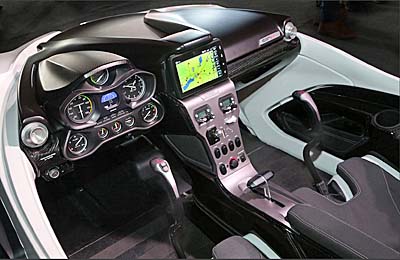
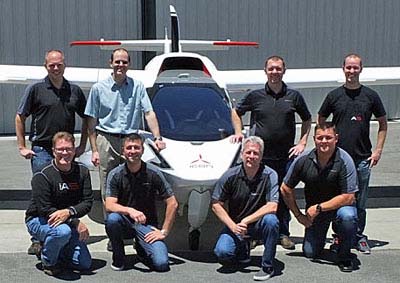
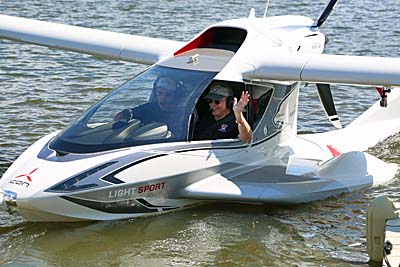









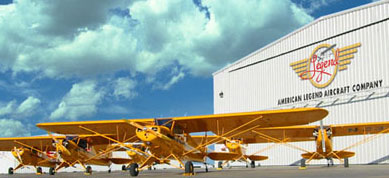















 In this newest posted video, you see the gorgeous Risen from
In this newest posted video, you see the gorgeous Risen from  As they are done and as I get the time to post them, I will advise you of new ones of interest. However, before I do that you can find many of the new ones plus all the earlier ones on the
As they are done and as I get the time to post them, I will advise you of new ones of interest. However, before I do that you can find many of the new ones plus all the earlier ones on the 





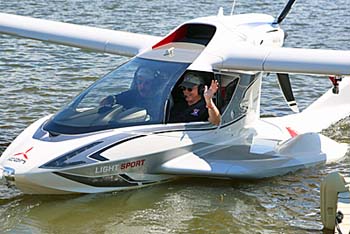























 My longtime friend and fellow board member, Tom Peghiny, participated in our annual Light Aircraft Manufacturers Association board of directors meeting at EAA AirVenture Oshkosh, where EAA kindly provides a quiet, air-conditioned space for our group to meet.
My longtime friend and fellow board member, Tom Peghiny, participated in our annual Light Aircraft Manufacturers Association board of directors meeting at EAA AirVenture Oshkosh, where EAA kindly provides a quiet, air-conditioned space for our group to meet. Since the SP/LSA rule was released in 2004, lithium batteries have grabbed the attention of FAA officials in a very powerful way. The fires onboard Boeing’s 787 Dreamliner made news all around the world after FAA had given their approval to the new design.
Since the SP/LSA rule was released in 2004, lithium batteries have grabbed the attention of FAA officials in a very powerful way. The fires onboard Boeing’s 787 Dreamliner made news all around the world after FAA had given their approval to the new design. Perhaps it would be best if I present Tom’s hilarious lines using an imaginary dialogue between an inventor and FAA officials.
Perhaps it would be best if I present Tom’s hilarious lines using an imaginary dialogue between an inventor and FAA officials. FAA: “Don’t try to snow us with all that technobabble. You said ‘explosive,’ didn’t you? We’re still trying to wrap our minds around that.”
FAA: “Don’t try to snow us with all that technobabble. You said ‘explosive,’ didn’t you? We’re still trying to wrap our minds around that.”















 The big summer celebration of flight has ended. I have more info from AirVenture 2015 and next I plan a summary article. A preview includes the most positive prognosis from industry players I have seen in recent years; strong sales reported by several producers; several interesting developments or benchmarks; and a wonderful week of weather as icing on the cake. My video partner and I put in long days to secure perhaps 30 or more new videos including many on the freshest topics in light aviation. Stay tuned for more and
The big summer celebration of flight has ended. I have more info from AirVenture 2015 and next I plan a summary article. A preview includes the most positive prognosis from industry players I have seen in recent years; strong sales reported by several producers; several interesting developments or benchmarks; and a wonderful week of weather as icing on the cake. My video partner and I put in long days to secure perhaps 30 or more new videos including many on the freshest topics in light aviation. Stay tuned for more and  The gleaming example in the nearby photos was built by Steve Cole from Indianapolis over a three year and eight month period, from plans. It meets all the Part 103 parameters — empty weight of 254 pounds; 5 gallons of fuel; 55-knot (63 mph) cruise; 24-knot stall — yet can climb enthusiastically at 1,000 fpm using its half-VW 45-horsepower engine from Scott Casler. The four stroke powerplant burns only 1.7 gallons an hour.
The gleaming example in the nearby photos was built by Steve Cole from Indianapolis over a three year and eight month period, from plans. It meets all the Part 103 parameters — empty weight of 254 pounds; 5 gallons of fuel; 55-knot (63 mph) cruise; 24-knot stall — yet can climb enthusiastically at 1,000 fpm using its half-VW 45-horsepower engine from Scott Casler. The four stroke powerplant burns only 1.7 gallons an hour. As AirVenture 2015 drew to a close, Friday was the day I got to fly the A5 from
As AirVenture 2015 drew to a close, Friday was the day I got to fly the A5 from 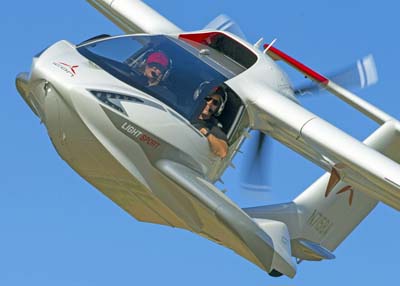 Two of us flew A5 in 12 gusting 22 mph wind conditions and lake water with one to one and a half foot swells. As CEO Kirk Hawkins put it on my return, “not all light seaplanes could handle that.” A5 did very well in those rowdier circumstances. I certainly did not fly the plane in smooth summer breezes and a gently rippled water surface.
Two of us flew A5 in 12 gusting 22 mph wind conditions and lake water with one to one and a half foot swells. As CEO Kirk Hawkins put it on my return, “not all light seaplanes could handle that.” A5 did very well in those rowdier circumstances. I certainly did not fly the plane in smooth summer breezes and a gently rippled water surface.